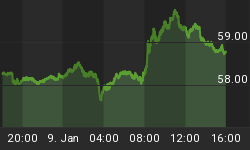How to Use Technical Analysis on the VIX to know when the market will change direction.
In Part 1, we discussed how the VIX moved up during times of uncertainty or fear, and down during times of greed or confidence. And since the VIX moves in the opposite direction of the market, we commented that one could know what to expect for upcoming market movements.
But we also said, ... that is only if the VIX is a reliable tool for determining what could happen next in the stock market. So, Part 2 of this study is about the correlation between the VIX, the Stock Market, and other indicators. (If you have not read it, you can find Part 1 at this link: Part 1 Study of the VIX)
Is there sufficient correlation between the VIX and the Stock Market?
You are not going to like the answer, because the answer is NO if the VIX is used alone. Most investors are just not cognizant of the fact that when they are investing or trading ... they are trying to compete with Goldman Sachs and other large Wall Street firms. These firms use a multitude of programs and tools to hedge, sell against hedging, and to initiate clean buy's into the market.
I'm not going to sugar coat Part 2 of this VIX study ... instead, I will show you some of the critical factors that are involved when the VIX is moving up or down. If anything, it will show you WHY you should not rely on the VIX by itself.
When Wall Street players hedge or play the market, the NYSE Down Volume (Symbol: DVOL) is always a factor with what is going on with the VIX. So, the first thing we will do is look at the 4 possible VIX to DVOL combinations that can occur, and what they typically mean for the market movements.
Here they are ... this chart shows the 4 major possibilities for various VIX and DVOL combinations. As you can see, there are really 2 important possibilities for investors, and that is when the VIX and the DVOL are going in the same direction ... whether up or down together. (When they are going in opposite directions at the same time, one is offsetting the other which influences a sideways market move.

Let's look at an actual chart that shows you these two elements in action. The chart below is from April to August of 2011. On the chart, you will see 4 vertical lines, and 6 labels (1 through 6) where the 4 possible conditions are shown. I won't belabor the explanation, but instead present a simple matrix chart at the bottom of this chart that explains each labeled occurrence.

Below is the matrix showing the VIX to Dvol combinations that occurred on the chart above and their resulting market action.

For those who are astutely looking at the chart, you are probably asking "what helps to determine how large the SPY move is or isn't? ... or what helps determine how long a move will last?"
A significant part of the answer has to do with "how much Institutional Investor Selling is occurring at the same time". The Institutional Selling part of the chart (see below) is made up of a 3 day exponential moving average, and 6 day weighted moving average. Together, these two moving averages depict the short term selling trend being initiated by Institutional Investors. The "distance" between the red/blue Institutional selling lines depict the amount of selling and the selling trend.
Note how the VIX and the Dvol both peaked in the beginning of August. Even though the VIX peaked, many were not sure if the VIX was going to continue in an up trend or not. The answer came just after 48 hours had passed because the Institutional Selling shifted to a down trend (see the yellow vertical line). Indicator tools like this are important for understanding what is really going on in the market, and why an isolated indicator like the VIX can't tell the whole story by itself.
Tools like these indicators are important parts to the whole equation, but still they don't tell the complete story. It is why we post two to three dozen charts every morning ... together, they are necessary in order to "see what the Institutional Investors and Wall Street firms are doing".
These days, a good part of investing sensibly is to never go against what the Institutional Investors are doing. The days that a smaller investor can win when going against what the big Institutions are doing are few and far between.
















